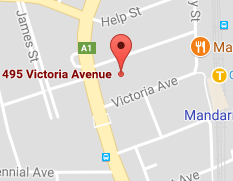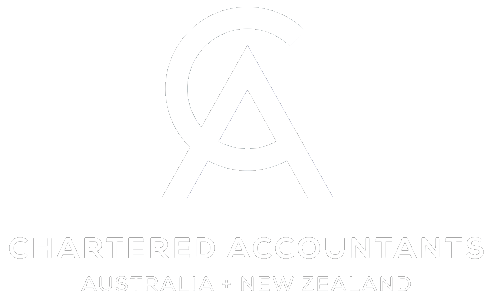The tax and superannuation highlights of Tuesday night’s Budget are summarised below:-
Personal income tax measures
- Immediate tax relief for low and middle income earners
The Low and Middle Income Tax Offset will provide a benefit of up to $200 for taxpayers with a taxable income of $37,000 or less. Between $37,000 and $48,000 the offset will increase at a rate of 3 cents per dollar to the maximum benefit of $530. From $90,001 to $125,333 the offset will phase out at the rate of 1.5 cents per dollar. - Lifting tax brackets to protect taxpayers from ‘bracket creep’ and eliminating the 37% tax bracket. The following tables summarise the proposed tax bracket changes:
Tax rates and thresholds for 2018-19 onwards
| Rate | 2018-19 to 2021-22 | 2022-23 and 2023-24 | 2024-25 onwards |
|---|---|---|---|
| 0% | $0-$18,200 | $0-$18,200 | $0-$18,200 |
| 19% | $18,201-$37,000 | $18,201-$41,000 | $18,201-$41,000 |
| 32.5% | $37,001-$90,000 | $41,001-$120,000 | $41,001-$200,000 |
| 37% | $90,001-$180,000 | $120,001-$180,000 | N/A |
| 45% | $180,001+ | $180,001+ | $200,001+ |
- elf-employed age pensioners will be able to access the Pension Work Bonus and earn up to $7,800 per year without reducing their pension payments. Employers of older Australians will be able to access wage subsidies of up to $10,000 and a new Skills and Training Incentive will be offered to mature workers. Those on full pension and self-funded retirees will be able to access the Pension Loans Scheme, allowing them to increase their income by up to 50% of the Age Pension.
Medicare Levy related measures
For the 2017-18 income year the Medicare levy low income threshold for singles will be increased to $21,980 (up from $21,655 for 2016-17). For couples with no children, the family income threshold will be increased to $37,089 (up from $36,541 for 2016-17). The additional amount of threshold for each dependent child or student will be increased to $3,406 (up from $3,356).
As advised in our recent tax policies newsletter, the Government has announced that the Medicare Levy will not be increasing to 2.5% and will remain at 2%.
Business related tax measures
- The Government is committed to its previously announced Ten Year Enterprise Tax Plan. They propose to lower the company rate to 25% for all companies by 2026-27. The current lower corporate tax rate of 27.5% will be broadened and made available to companies with an annual turnover of less than $50 million (up from $25m) from 1 July 2018.
- The $20,000 small business asset write-off applicable to businesses with turnovers of less than $10m has been extended for another year to 30 June 2019. Assets valued at $20,000 or more can continue to be placed into the general small business pool and depreciated at 15% in the first income year and 30% each income year thereafter. The pool can be immediately deducted if the balance is less than $20,000 over this period. The instant asset write-off threshold for immediate deductibility of the balance of the pool will revert to $1,000 on 1 July 2019.
- The Government is to amend the R & D tax incentive for income years starting on or after 1 July 2018. In respect of companies with aggregated turnover of $20m or more, an R & D premium will apply. Please see the attached paper for further details. For companies with aggregated turnover below $20m the refundable tax offset will attract a premium of 13.5 percentage points above the claimant tax rate. R & D tax offsets that cannot be refunded will be carried forward as non-refundable tax offsets to future income years.
- From 1 July 2019, the Government will introduce a limit of $10,000 for cash payments made to businesses for goods and services. Currently, large undocumented cash payments can be used to avoid tax or to launder money from criminal activity. This measure will require transactions over a threshold to be made through an electronic payment system or cheque. Transactions with financial institutions or consumer to consumer non-business transactions will not be affected.
- The Taxable Payments and Reporting System (“TPRS”) will be extended to include security providers and investigation services, road freight transport and computer system design and related services. This will extend the TPRS already applying to the building and construction industries.
- Removing tax deductibility of payments where withholding obligations have been disregarded. From 1 July 2019, businesses will no longer be able to claim a tax deduction for the following payments:
- Payments to their employees such as wages where they have not withheld any amount of PAYG from these payments (i.e. despite the fact the PAYG with-holding requirements apply).
- Payments made by businesses to contractors where the contractor does not provide an ABN and the business does not withhold any amount of PAYG (despite the withholding requirements applying).
Superannuation related measures
- Self-managed super funds will be allowed to have up to six members (up from the current maximum of 4) from 1 July 2019.
- An exemption for the work test will apply for voluntary super contributions made by individuals aged between 65 and 74 where they have superannuation savings of below $300,000 and in their first year of retirement they do not meet the work test. This new measure will apply from 1 July 2019.
- From 1 July 2018 employees with multiple employers who earn income exceeding $263,157pa will be able to elect that wages from certain employers will not be subject to the superannuation guarantee charge (9.5%). This measure will allow those individuals to avoid unintentionally breaching the $25,000 concessional contributions cap.
From budget proposal to legislation
It needs to be understood that the above budget proposals are just that. Until the Bills are passed by Parliament they have no legislative authority. With no absolute control in the Senate, it is expected that some of the above proposals will be difficult to implement. Our recommendation is “watch this space” and as always, contact your StewartBrown Partner or Manager for any points of interest or updates along the way.
Full Budget Report
For further details in respect of the content of the Federal Budget click here to view or download the original paper issued by Thomson Reuters.



